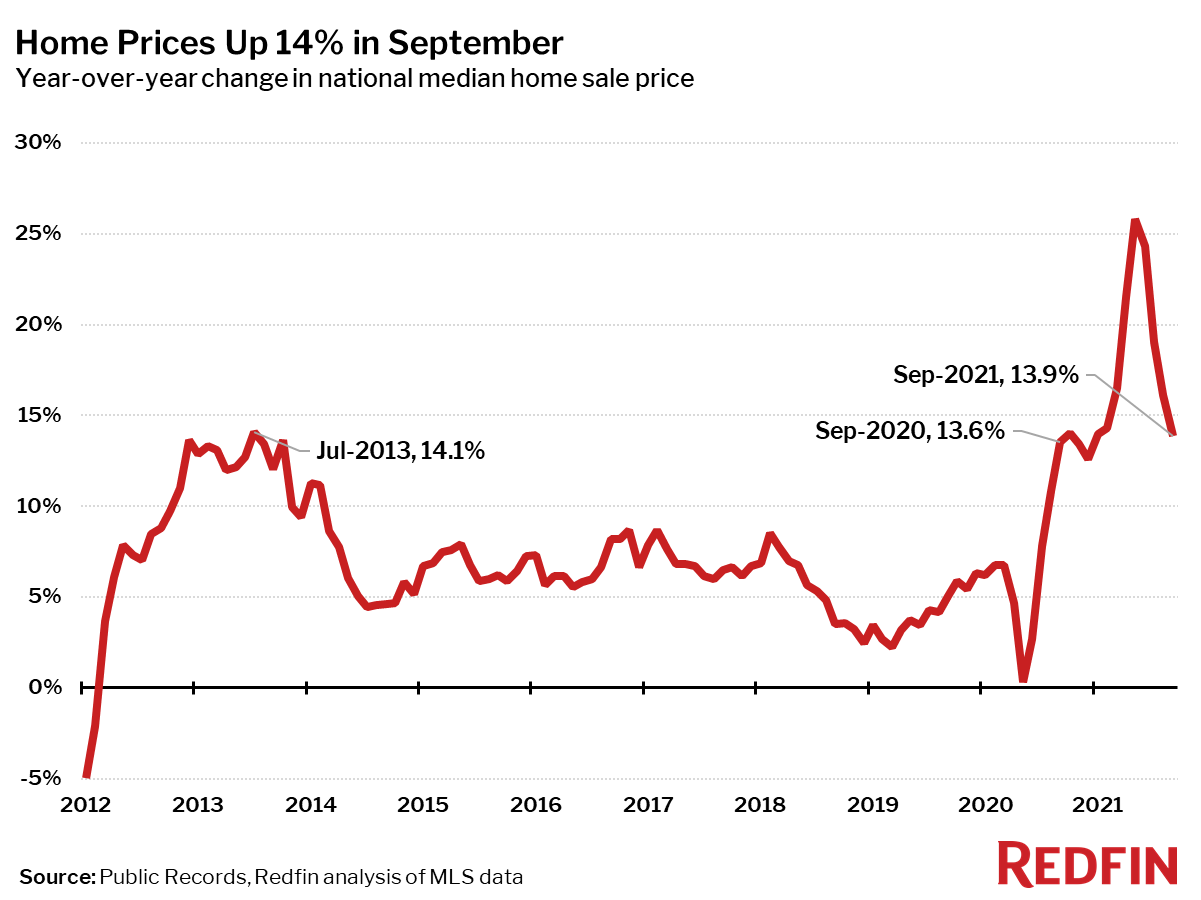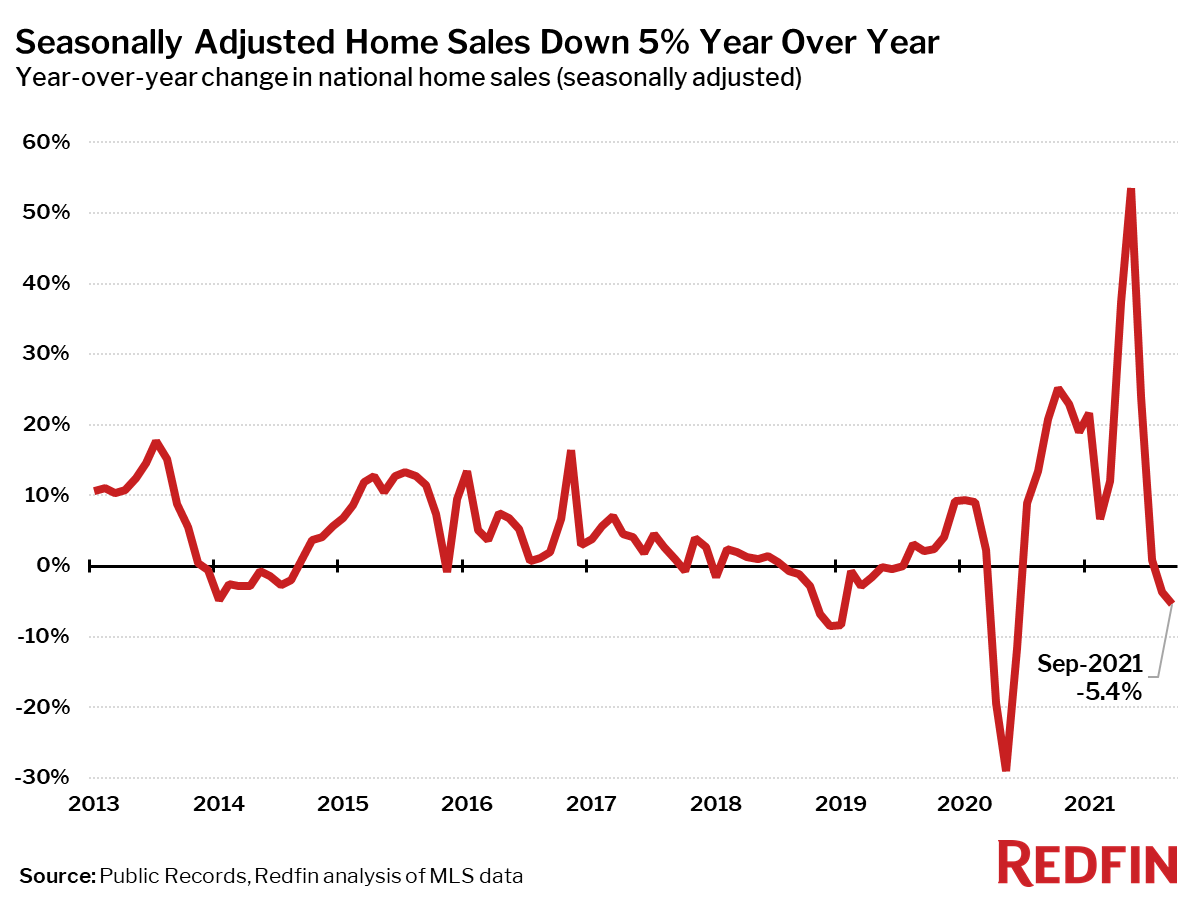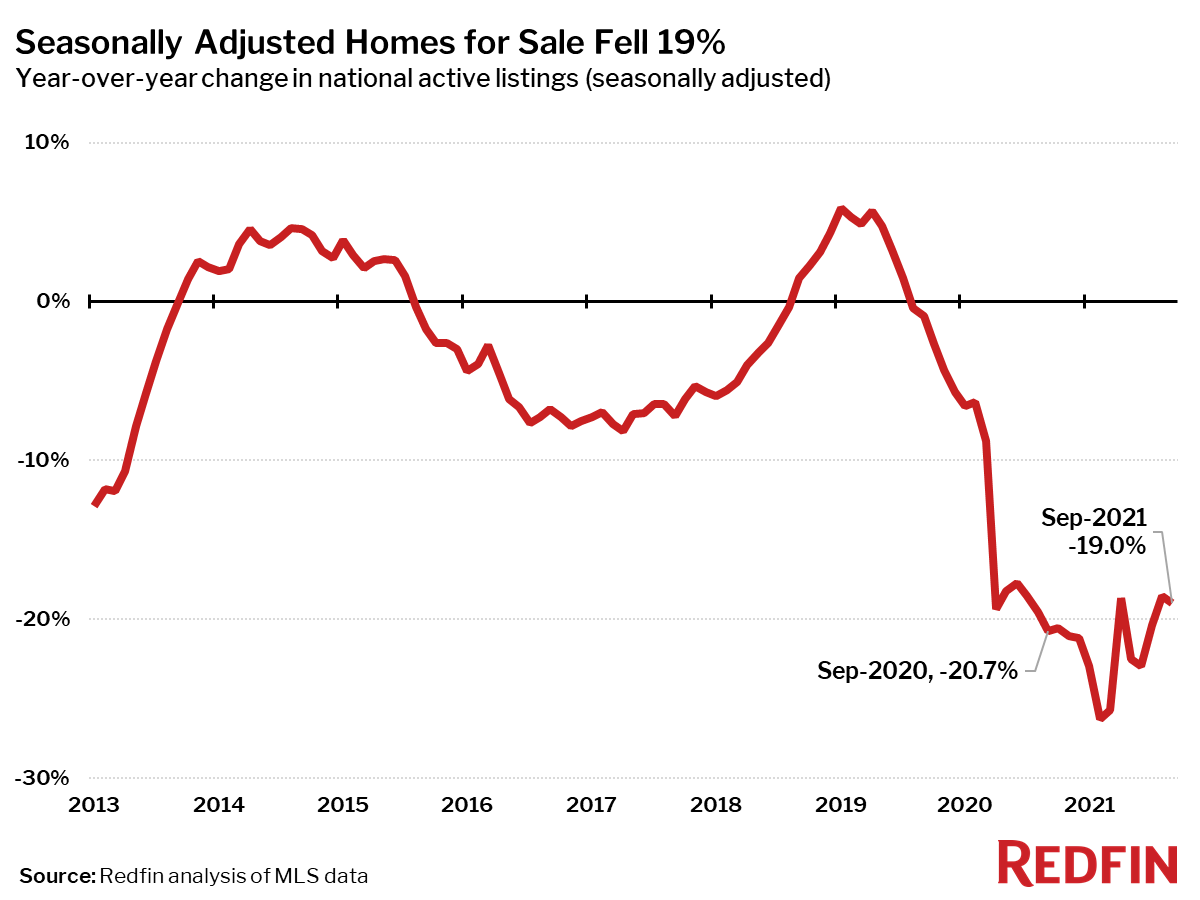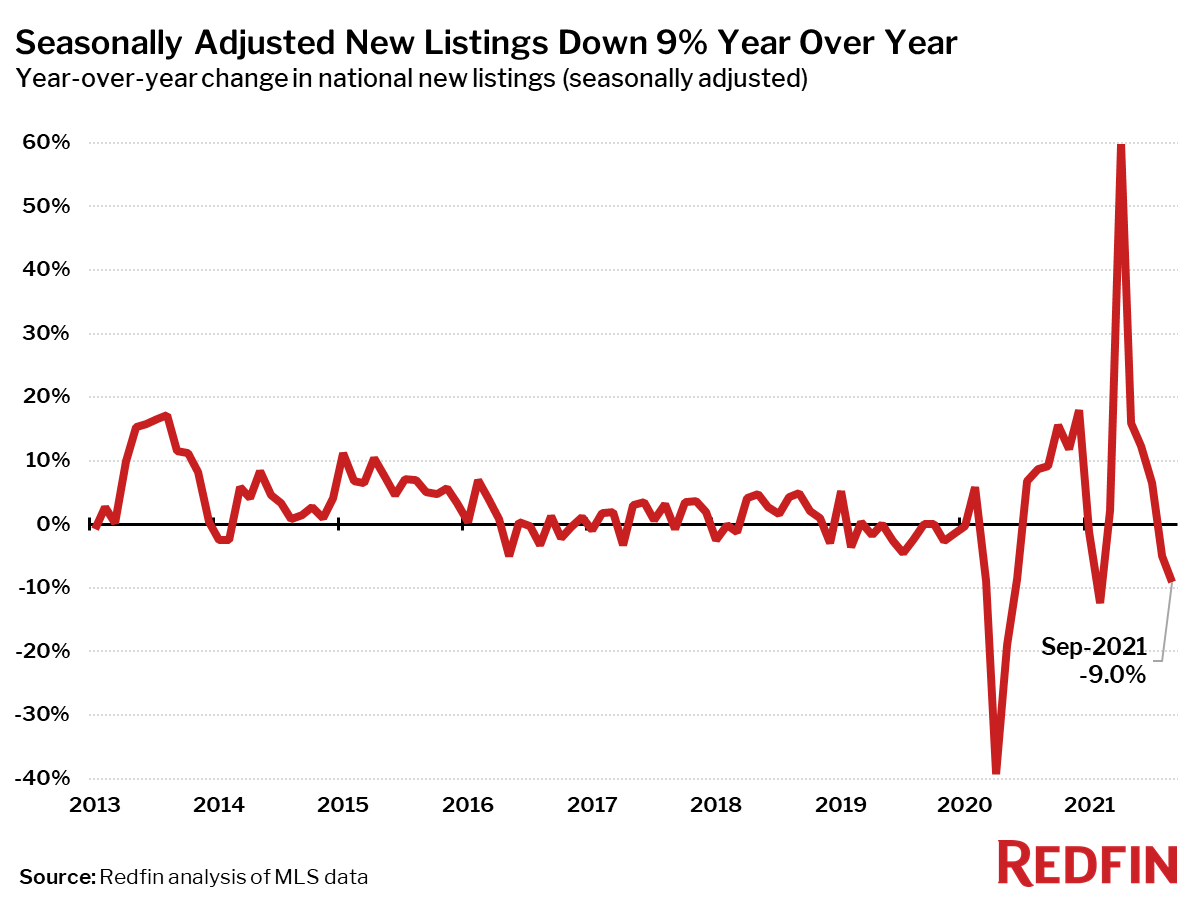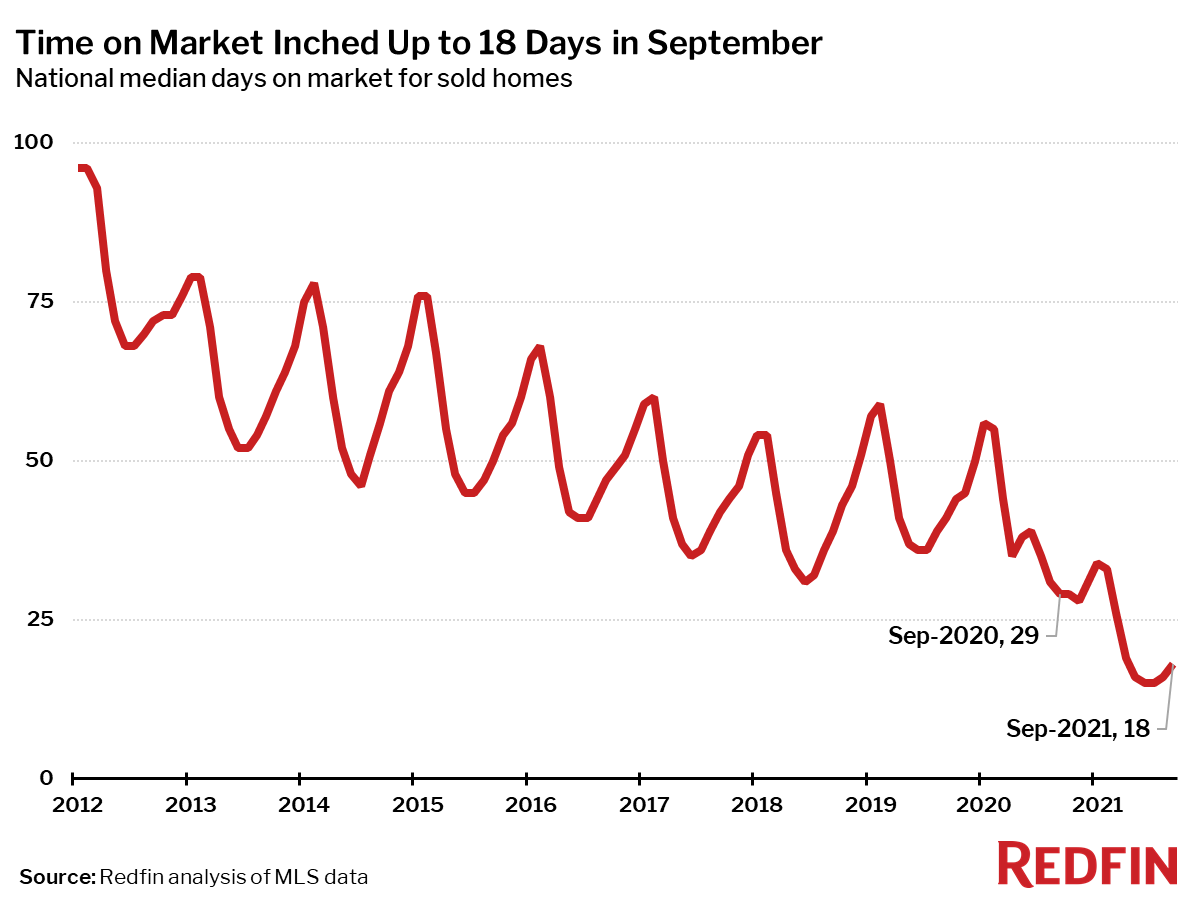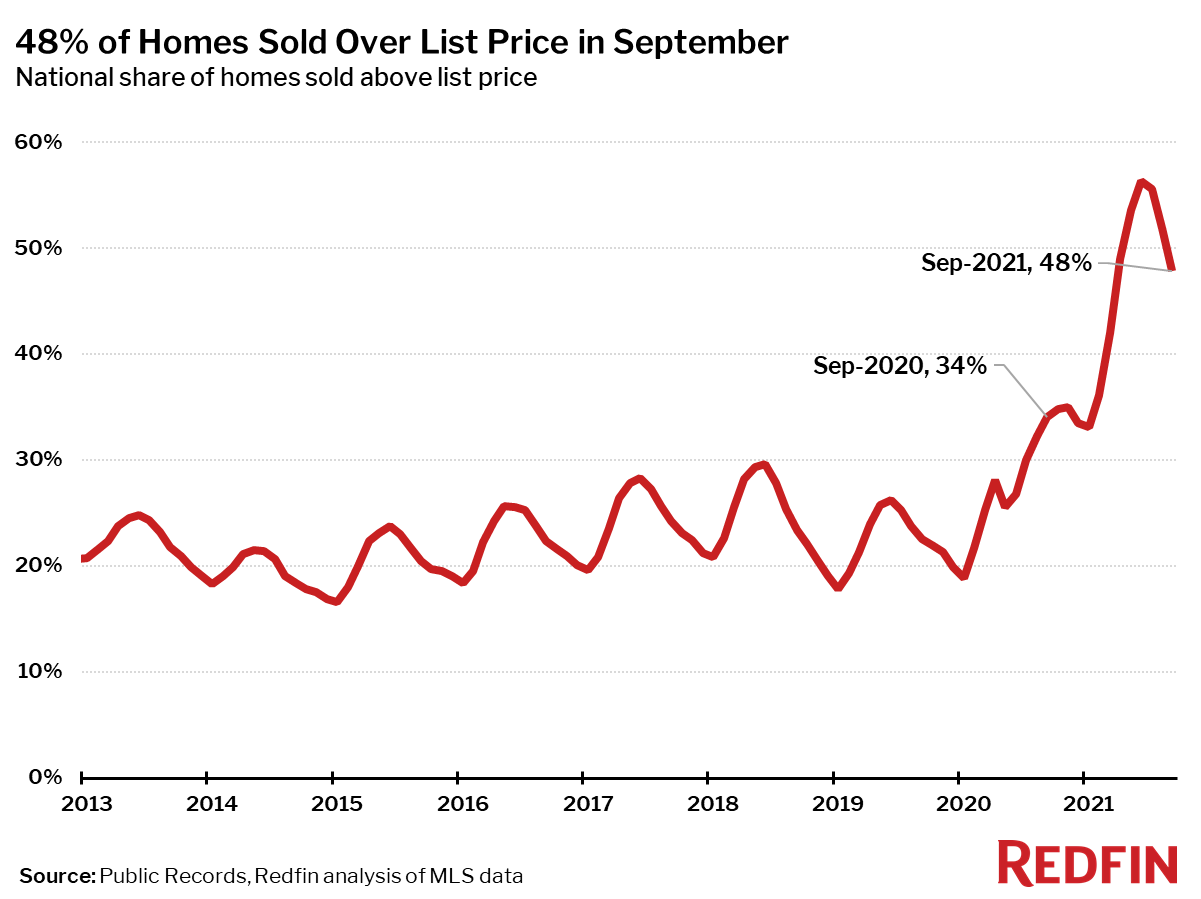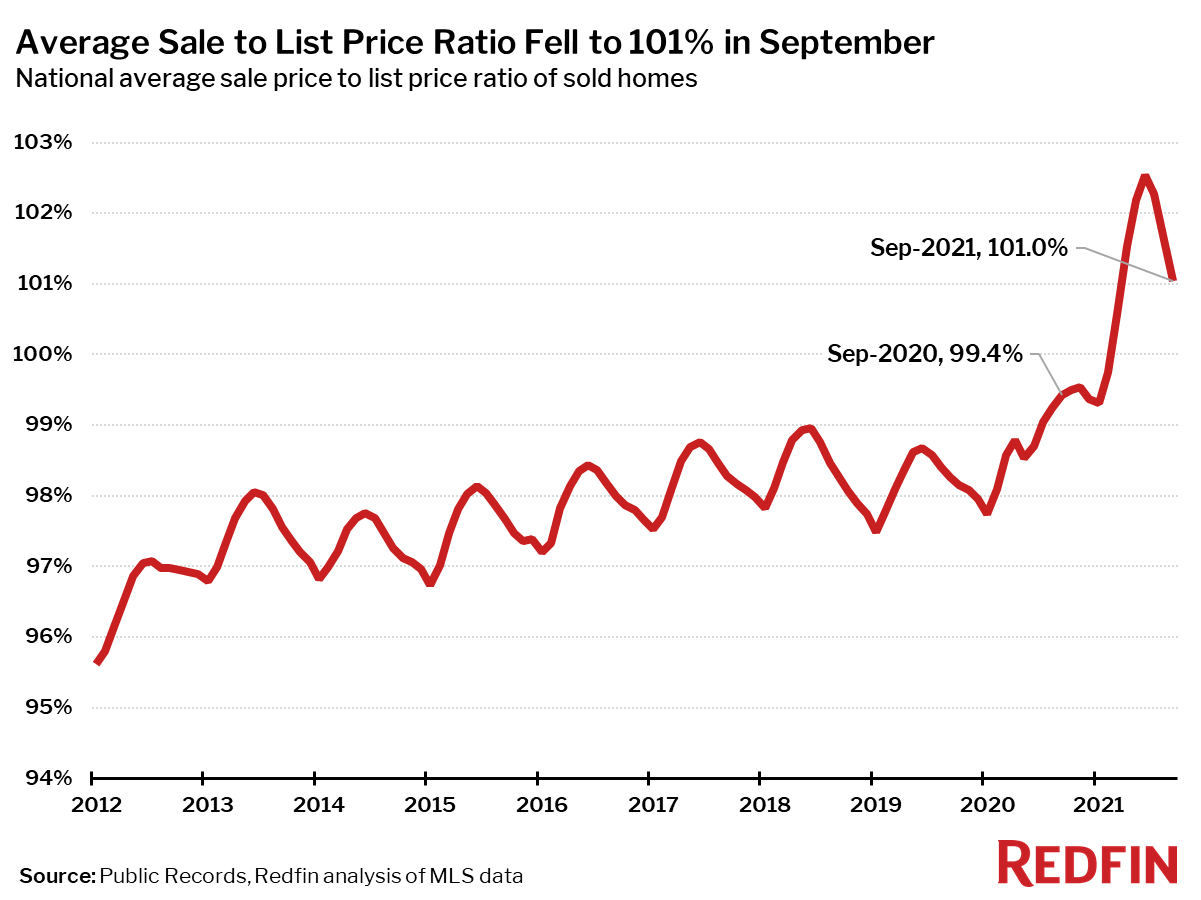Key Highlights
- Existing-home sales rose 0.8% in October from September to a seasonally adjusted annual rate of 6.34 million, sustaining the growth in sales in the prior month.
- The median existing-home sales price increased 13.1% year-over-year to $353,900.
- From one year ago, the inventory of unsold homes decreased 12% to 1.25 million – equivalent to 2.4 months of the monthly sales pace.
Existing-home sales increased in October, marking two straight months of growth, according to the National Association of Realtors®. Two of the four major U.S. regions saw month-over-month sales climb, one region reported a drop and the fourth area held steady in October. On a year-over-year basis, each region witnessed sales decrease.
Total existing-home sales,[i] https://www.nar.realtor/existing-home-sales, completed transactions that include single-family homes, townhomes, condominiums and co-ops, rose 0.8% from September to a seasonally adjusted annual rate of 6.34 million in October. Sales fell 5.8% from a year ago (6.73 million in October 2020).
“Home sales remain resilient, despite low inventory and increasing affordability challenges,” said Lawrence Yun, NAR’s chief economist. “Inflationary pressures, such as fast-rising rents and increasing consumer prices, may have some prospective buyers seeking the protection of a fixed, consistent mortgage payment.”
Total housing inventory[ii] at the end of October amounted to 1.25 million units, down 0.8% from September and down 12.0% from one year ago (1.42 million). Unsold inventory sits at a 2.4-month supply at the current sales pace, equal to September’s supply, and down from 2.5 months in October 2020.
The median existing-home price[iii] for all housing types in October was $353,900, up 13.1% from October 2020 ($313,000), as prices climbed in each region. This marks 116 straight months of year-over-year increases, the longest-running streak on record.
“Among some of the workforce, there is an ongoing trend of flexibility to work anywhere, and this has contributed to an increase in sales in some parts of the country,” said Yun. “Record-high stock markets and all-time high home prices have worked to significantly raise total consumer wealth and, when coupled with extended remote work flexibility, elevated housing demand in vacation regions.”
Properties typically remained on the market for 18 days in October, up from 17 days in September and down from 21 days in October 2020. Eighty-two percent of homes sold in October 2021 were on the market for less than a month.
In October, first-time buyers were responsible for 29% of sales, up from 28% in September and down from 32% in October 2020. NAR’s 2021 Profile of Home Buyers and Sellers – released earlier this month[iv] – reported that the annual share of first-time buyers was 34%.
Individual investors or second-home buyers, who make up many cash sales, purchased 17% of homes in October, up from both 13% in September and from 14% in October 2020. All-cash sales accounted for 24% of transactions in October, up from both 23% in September and from 19% in October 2020.
Distressed sales[v] – foreclosures and short sales – represented less than 1% of sales in October, equal to the percentage seen a month prior and equal to October 2020.
According to Freddie Mac, the average commitment rate for a 30-year, conventional, fixed-rate mortgage was 3.07 in October, up from 2.90% in September. The average commitment rate across all of 2020 was 3.11%.
Single-family and Condo/Co-op Sales
Single-family home sales rose to a seasonally adjusted annual rate of 5.66 million in October, up 1.3% from 5.59 million in September and down 5.8% from one year ago. The median existing single-family home price was $360,800 in October, up 13.5% from October 2020.
Existing condominium and co-op sales were recorded at a seasonally adjusted annual rate of 680,000 units in October, down 2.9% from 700,000 in September and down 5.6% from one year ago. The median existing condo price was $296,700 in October, an annual increase of 8.7%.
“At a time when mortgage rates are still low, buying and securing a home is a wise investment,” said NAR President Leslie Rouda Smith, a Realtor® from Plano, Texas, and a broker associate at Dave Perry-Miller Real Estate in Dallas. “NAR will strive to make homeownership obtainable for all who want to pursue one of the key components of the American Dream.”
Regional Breakdown
Existing-home sales in the Northeast fell 2.6% in October, registering an annual rate of 750,000, a 13.8% decline from October 2020. The median price in the Northeast was $379,100, up 6.4% from one year ago.
Existing-home sales in the Midwest rose 4.2% to an annual rate of 1,500,000 in October, a 6.3% decrease from a year ago. The median price in the Midwest was $259,800, a 7.8% jump from October 2020.
Existing-home sales in the South increased 0.4% in October, posting an annual rate of 2,780,000, a 3.5% drop from one year ago. The median price in the South was $315,500, a 16.1% climb from one year prior.
Existing-home sales in the West neither rose nor fell from the prior month’s level, registering an annual rate of 1,310,000 in October, down 5.1% from one year ago. The median price in the West was $507,200, up 7.7% from October 2020.
The National Association of Realtors® is America’s largest trade association, representing more than 1.5 million members involved in all aspects of the residential and commercial real estate industries.
# # #
For local information, please contact the local association of Realtors® for data from local multiple listing services (MLS). Local MLS data is the most accurate source of sales and price information in specific areas, although there may be differences in reporting methodology.
NOTE: NAR’s Pending Home Sales Index for October is scheduled for release on November 29, and Existing-Home Sales for November will be released December 22; release times are 10:00 a.m. ET.
Information about NAR is available at www.nar.realtor. This and other news releases are posted on the NAR Newsroom at www.nar.realtor/newsroom. Statistical data in this release, as well as other tables and surveys, are posted in the “Research and Statistics” tab.
[i] Existing-home sales, which include single-family, townhomes, condominiums and co-ops, are based on transaction closings from Multiple Listing Services. Changes in sales trends outside of MLSs are not captured in the monthly series. NAR rebenchmarks home sales periodically using other sources to assess overall home sales trends, including sales not reported by MLSs.
Existing-home sales, based on closings, differ from the U.S. Census Bureau’s series on new single-family home sales, which are based on contracts or the acceptance of a deposit. Because of these differences, it is not uncommon for each series to move in different directions in the same month. In addition, existing-home sales, which account for more than 90% of total home sales, are based on a much larger data sample – about 40% of multiple listing service data each month – and typically are not subject to large prior-month revisions.
The annual rate for a particular month represents what the total number of actual sales for a year would be if the relative pace for that month were maintained for 12 consecutive months. Seasonally adjusted annual rates are used in reporting monthly data to factor out seasonal variations in resale activity. For example, home sales volume is normally higher in the summer than in the winter, primarily because of differences in the weather and family buying patterns. However, seasonal factors cannot compensate for abnormal weather patterns.
Single-family data collection began monthly in 1968, while condo data collection began quarterly in 1981; the series were combined in 1999 when monthly collection of condo data began. Prior to this period, single-family homes accounted for more than nine out of 10 purchases. Historic comparisons for total home sales prior to 1999 are based on monthly single-family sales, combined with the corresponding quarterly sales rate for condos.
[ii] Total inventory and month’s supply data are available back through 1999, while single-family inventory and month’s supply are available back to 1982 (prior to 1999, single-family sales accounted for more than 90% of transactions and condos were measured only on a quarterly basis).
[iii] The median price is where half sold for more and half sold for less; medians are more typical of market conditions than average prices, which are skewed higher by a relatively small share of upper-end transactions. The only valid comparisons for median prices are with the same period a year earlier due to seasonality in buying patterns. Month-to-month comparisons do not compensate for seasonal changes, especially for the timing of family buying patterns. Changes in the composition of sales can distort median price data. Year-ago median and mean prices sometimes are revised in an automated process if additional data is received.
The national median condo/co-op price often is higher than the median single-family home price because condos are concentrated in higher-cost housing markets. However, in a given area, single-family homes typically sell for more than condos as seen in NAR’s quarterly metro area price reports.
[iv] Survey results represent owner-occupants and differ from separately reported monthly findings from NAR’s Realtors® Confidence Index, which include all types of buyers. Investors are under-represented in the annual study because survey questionnaires are mailed to the addresses of the property purchased and generally are not returned by absentee owners. Results include both new and existing homes.
[v] Distressed sales (foreclosures and short sales), days on market, first-time buyers, all-cash transactions and investors are from a monthly survey for the NAR’s Realtors® Confidence Index, posted at nar.realtor.
read more…
nar.realtor.com



 Since July 2021, the city has gained an estimated 6,332 permanent movers, indicating a gradual return to New York City.
Since July 2021, the city has gained an estimated 6,332 permanent movers, indicating a gradual return to New York City.






